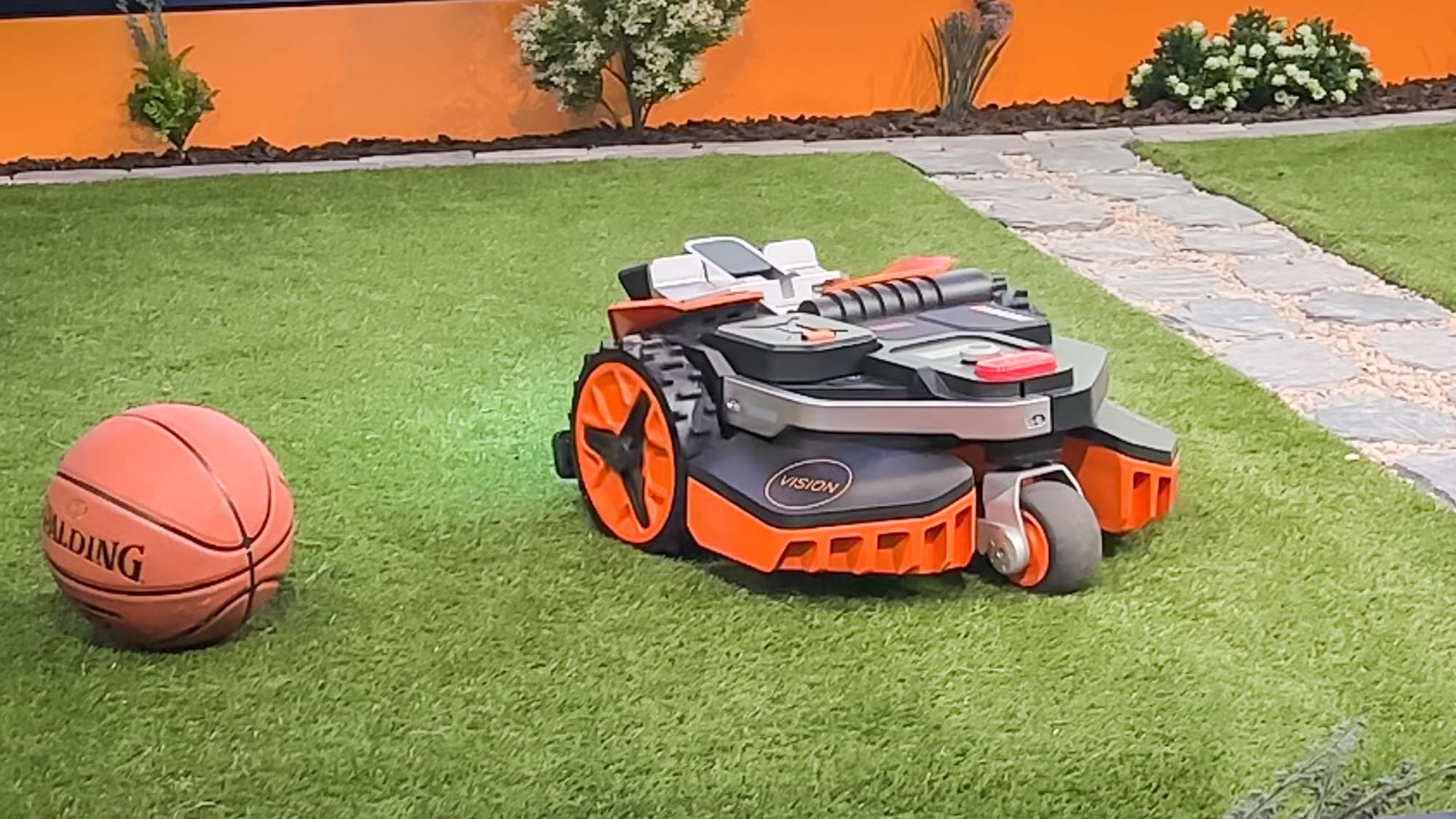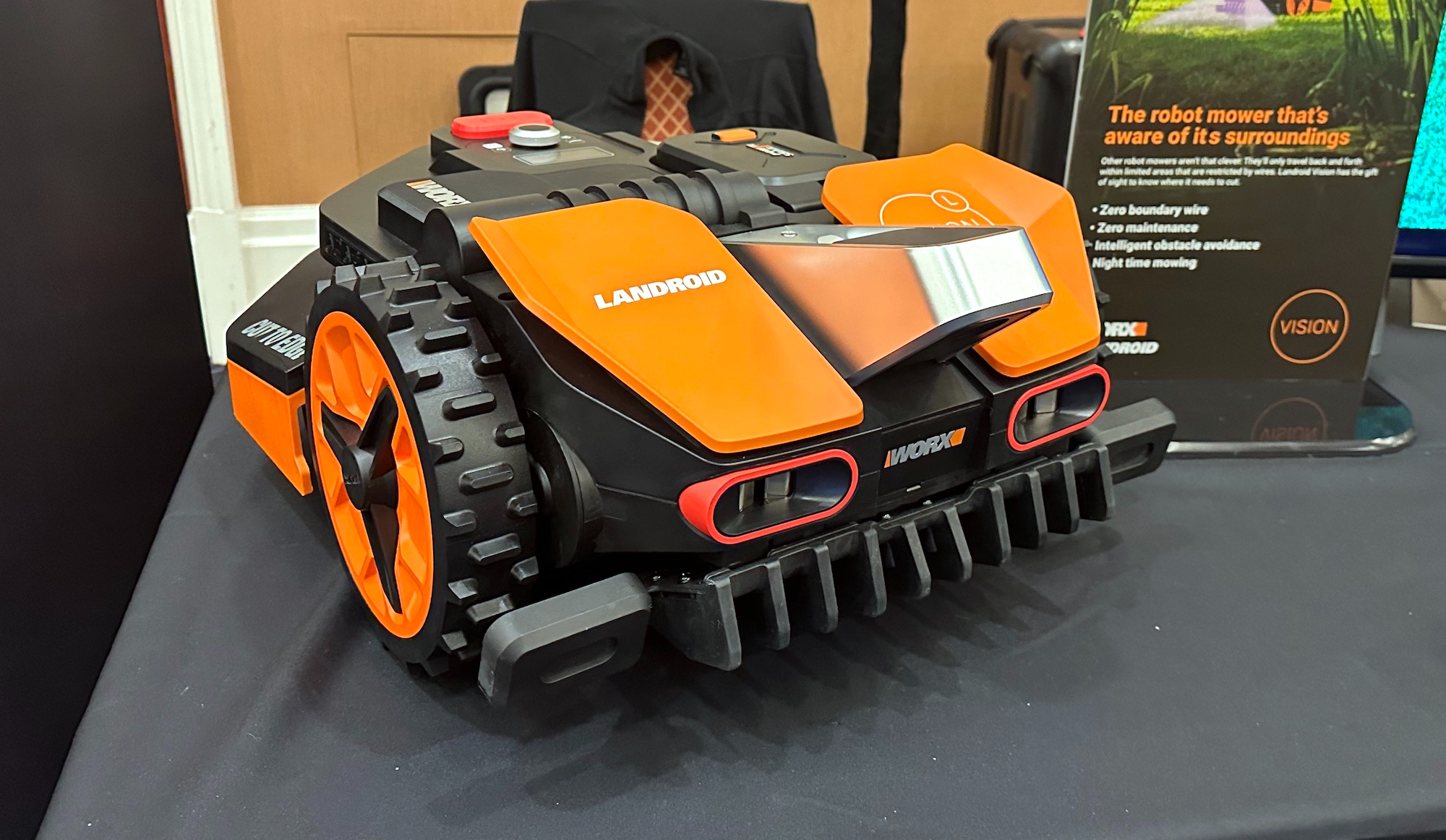This robot lawnmower fixes the worst thing about robot lawnmowers
The Worx Landroid Vision uses a camera to see where it's going.

Unlike robot vacuums, robot lawnmowers haven't taken off in quite the same way in the U.S.. That's partly due to cost — most models start at around $1,000, compared to less than $200 for a robot vacuum — and setting up a robot lawnmower is frankly a pain in the grass.
The biggest pain point: you have to run a wire around the border of your property, which acts like an invisible fence for the lawnmower. If you have a large yard, it can take a long time, and if the wire breaks, you have to go inch by inch to find the rupture.
Update: The Work Landroid Vision is one of our picks for our Best of CES 2023 Awards. See what other products debuting at this year's show made the final cut.
Worx's newest robot lawnmower, the Landroid Vision, does away with all that. Much like some of the best robot vacuums, it has a camera in the front that lets the mower know when it approaches the edge of your yard — no wire needed. We took a closer look at this new mower at CES 2023. It's cool, but if you want one, it'll cost you a lot of green.
@tomsguide ♬ Hey It's Me - Official Sound Studio
Even more so than the Husqvarna Automower 435X, the Landroid Vision looks like the Christian Bale era Batman's Tumbler, with a splash of orange paint. It has a grille-like front bumper with two red slots just above; these are used to recharge the robot when it's docked. There's a small display and control knob on top. With all its odd angles and appendages, I think it looks a little too busy, in fact.
Jutting out from the front of the Landroid Vision is a wide-angle HD camera mounted on a silver bracket; this scans the ground in front of the mower for anything that doesn't look like grass. When it encounters something — say, your garden bed or a baseball — the mower will turn to avoid it. It's similar to the technology in the Roomba J7+ robot vacuum. You can also mount two lights on either side of the camera, so that you can mow in the dark.
Like other robot mowers, the Landroid Vision moves in a random pattern around your yard, so if you want to know how to stripe your lawn, you'll have to look elsewhere. And, similar to other robot mowers, the Vision has a spinning disk on its underside with three razor blades, which are designed to just trim your grass a little bit at a time. The blade deck can be raised from 1.5 to 3.5 inches.
Sign up to get the BEST of Tom's Guide direct to your inbox.
Get instant access to breaking news, the hottest reviews, great deals and helpful tips.

The Landroid Vision can also be controlled via a smartphone app, which will let you schedule when the mower makes its rounds. If you need for the mower to cross a boundary, such as a walkway, you can set up RFID tags, so it knows where to go.
While the Vision docks automatically to recharge, I like that its battery is removable, and can be used in other Worx products, such as its leaf blowers and other power tools.
Worx has not set an official release date yet for the Landroid Vision other than this spring; the mower will be available in three models that can cover 1/4, 1/2, and a full acre, respectively. Prices will range from $2,399 to $2,999, which places it in the upper echelon of robot lawnmowers. You can get a good lawn service to take care of things for a long time for that amount of money, but then you won't have the Batmobile trimming your grass.
Read more
• 7 lawncare mistakes you're probably making
• How to store a lawnmower and protect it during the winter
• 5 reasons to buy an electric lawnmower
• How to put lime on your lawn and when to do it
• When should you stop mowing your lawn for the winter?
• How to make your grass greener in 8 easy steps

Michael A. Prospero is the U.S. Editor-in-Chief for Tom’s Guide. He oversees all evergreen content and oversees the Homes, Smart Home, and Fitness/Wearables categories for the site. In his spare time, he also tests out the latest drones, electric scooters, and smart home gadgets, such as video doorbells. Before his tenure at Tom's Guide, he was the Reviews Editor for Laptop Magazine, a reporter at Fast Company, the Times of Trenton, and, many eons back, an intern at George magazine. He received his undergraduate degree from Boston College, where he worked on the campus newspaper The Heights, and then attended the Columbia University school of Journalism. When he’s not testing out the latest running watch, electric scooter, or skiing or training for a marathon, he’s probably using the latest sous vide machine, smoker, or pizza oven, to the delight — or chagrin — of his family.
